200-250 95 Designated 1924 | 5-6 dead3 wounded 12 dead12 wounded Date 26 March 1885 | |
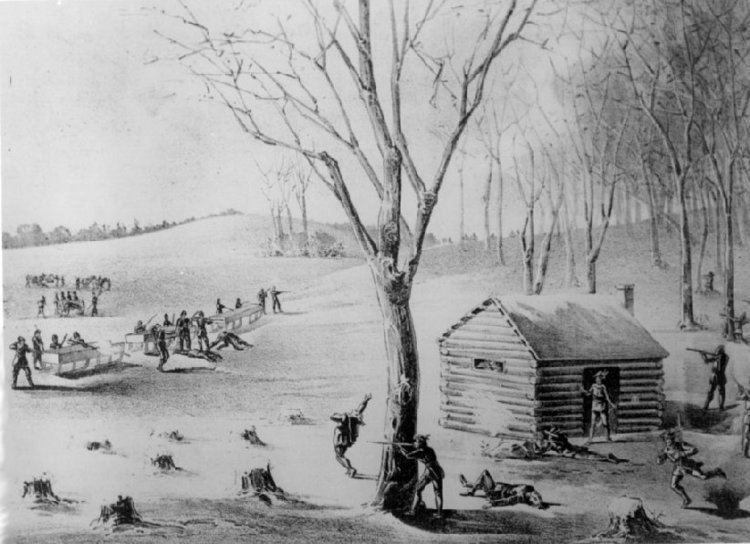 | ||
Similar Battle of Fish Creek, North‑West Rebellion, Battle of Batoche, Battle of Cut Knife, Frog Lake Massacre | ||
The battle of duck lake part 1
The Battle of Duck Lake (26 March 1885) was an infantry skirmish 2.5 km outside Duck Lake, Saskatchewan, between North-West Mounted Police forces of the Government of Canada, and the Métis militia of Louis Riel's newly established Provisional Government of Saskatchewan. The skirmish lasted approximately 30 minutes, after which Superintendent Leif Newry Fitzroy Crozier of the NWMP, his forces having endured fierce fire with twelve killed and eleven wounded, called for a general retreat. The battle is considered the initial engagement of the North-West Rebellion. Although Louis Riel proved to be victorious at Duck Lake, the general agreement among historians is that the battle was strategically a disappointment to his cause.
Contents
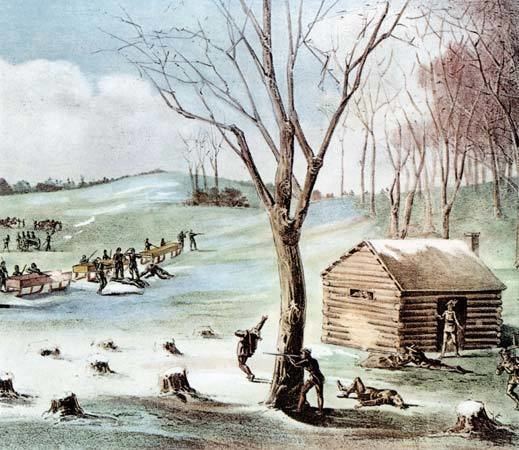
Battle of duck lake
Prelude
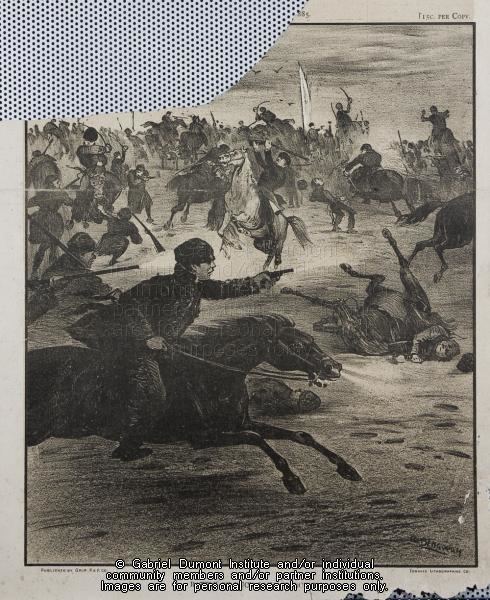
On March 19, 1885, Louis Riel self-affirmed the existence of the new Provisional Government of Saskatchewan. Following Riel's declaration, the Canadian government sought to reassert their control over the turbulent territory. Leif Crozier, the newly appointed NWMP superintendent and commander of North-Western Saskatchewan's forces, requested immediate reinforcement to Fort Carlton because he feared the growing instability created by Riel and the ever growing possibility of a First Nations uprising. Riel dispatched emissaries to deliver an ultimatum calling for the surrender of Fort Carlton without bloodshed. Crozier's representatives rejected the demand and vowed that the Métis leaders would be brought to justice.
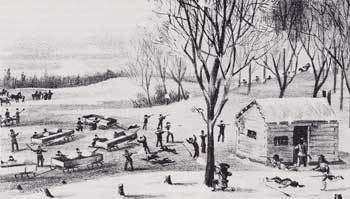
On March 25, in need of supplies for his men and horses, Crozier ordered Sergeant Alfred Stewart, Thomas McKay, and seventeen constables to Hillyard Mitchell's general goods store at Duck Lake. Unbeknownst to Crozier, however, commander Gabriel Dumont (Riel's right-hand man) and his Métis force had already entrenched themselves on the road to Duck Lake. On the morning of the 26th, Stewart's party encountered the band of Métis near Duck Lake. After ample harassment, Stewart decided not to risk a physical engagement, and chose to return to Fort Carlton; no shooting occurred. Crozier rallied together a larger force, which included 53 North-West Mounted Police non-commissioned officers and men, 41 men of the Prince Albert Volunteers, and a 7-pound cannon, and set out to secure the much-needed supplies and to reassert the authority of the Canadian government in the District of Saskatchewan.
Battle
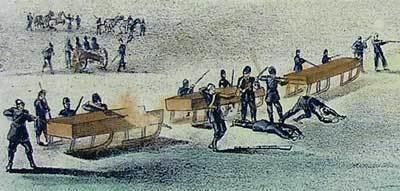
The forces met about 2.5 kilometres outside Duck Lake on a snowy plateau covered by trees, shrubs, and a few log cabins. Having spotted Crozier's force, Gabriel Dumont ordered his men to set up defensive positions around the log cabin and lie in wait. Similarly, Crozier's scouts informed the superintendent of the movements of the Métis; subsequently, Crozier ordered his men to halt and deploy their sleighs parallel to the road which was just before them. Both sides took up defensive positions.
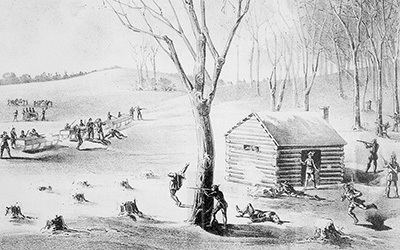
Gabriel Dumont dispatched his brother, Isidore, and an elderly half-blind chief, Assiwiyin, with a white flag in hopes of distracting Crozier's forces. The superintendent, believing that Dumont was interested in a parley, walked forward with an English Métis interpreter, "Gentleman" Joe McKay. During the half-hearted discussion, Crozier came to believe that Isidore and Assiwiyin were stalling so that the Métis force could manoeuver to flank his own men. As they began to leave, both Assiwiyin and Isidore attempted to draw their guns, prompting Crozier to give McKay the order to fire. A brief scuffle ensued between the two parties, which resulted in McKay shooting, and killing, both Dumont and Assiwyin.
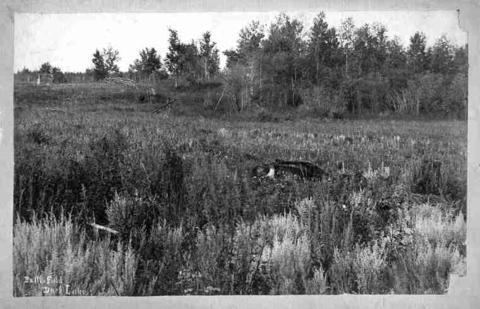
Despite the superior firepower and training of Crozier's militia, the Métis force were more numerous and their position within the log cabins and the tree line proved to be an overwhelming advantage. In an attempt to relieve the pressure on the Prince Albert Volunteers, Crozier ordered the 7-pound cannon to target the log cabins. After numerous discharges, a shell was placed in before the power charge was inserted, which disabled the cannon for the remainder of the battle.
Within half an hour, Crozier recognized the unavoidable and sounded a general retreat back to Fort Carlton. The Métis were eager to chase down Crozier and his retreating force, but Louis Riel intervened and declared the battle over.
Aftermath
The battle toll was high for the government forces. Twelve men were killed, and eleven men seriously injured. For the separatists, five Métis warriors were killed in the skirmish, including Dumont's brother. Furthermore, Gabriel Dumont himself was injured in the head by a passing bullet. Losing to Riel and the Métis force came as a great shock to Crozier's superiors. Colonel Acheson Irvine, Crozier's supervisor, suggested that Crozier's officerial prowess and judgement was overruled by impulsiveness.
Fort Carlton, a trading post with few defensive installations, was now in serious risk of attack. Immediately, Colonel Irvine summoned a council to discuss the future of Fort Carlton. The resounding unanimous decision was in favour of the evacuation and destruction of the fort. By 4 AM on 28 March, the last sleigh had left the smouldering fort.
In the span of three days and with the loss of only five men, Riel's forces had defeated Crozier's militia, forced the destruction and scavenged the remains of Fort Carlton, and spread fear of a Métis uprising throughout the North-West Territories. Riel's plans were not completely successful, though: he had hoped to capture Crozier and his men as hostages so that he might force the government's hand. Thus, while tactically successful, the battle of Duck Lake proved to be a strategic disappointment for Riel.
Legacy
The site of the battle was designated a National Historic Site of Canada in 1924.
In the spring of 2008, Tourism, Parks, Culture and Sport Minister Christine Tell proclaimed in Duck lake, that "the 125th commemoration, in 2010, of the 1885 Northwest Resistance is an excellent opportunity to tell the story of the prairie Métis and First Nations peoples' struggle with Government forces and how it has shaped Canada today."
Duck Lake is home to the Duck Lake Historical Museum and the Duck Lake Regional Interpretive Centre, and murals which reflect the history of the rebellion in the area. The Battle of Duck Lake, the Duck Lake Massacre, and a buffalo jump are all located here. The "First Shots Cairn" was erected on Saskatchewan Highway 212 as a landmark commemorating the scene of the first shots in the Battle of Duck Lake. The Our Lady of Lourdes Shrine at St. Laurent north of Duck Lake is a local pilgrimage site.
